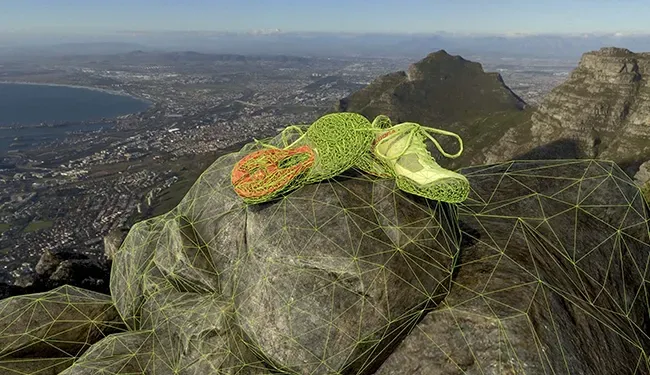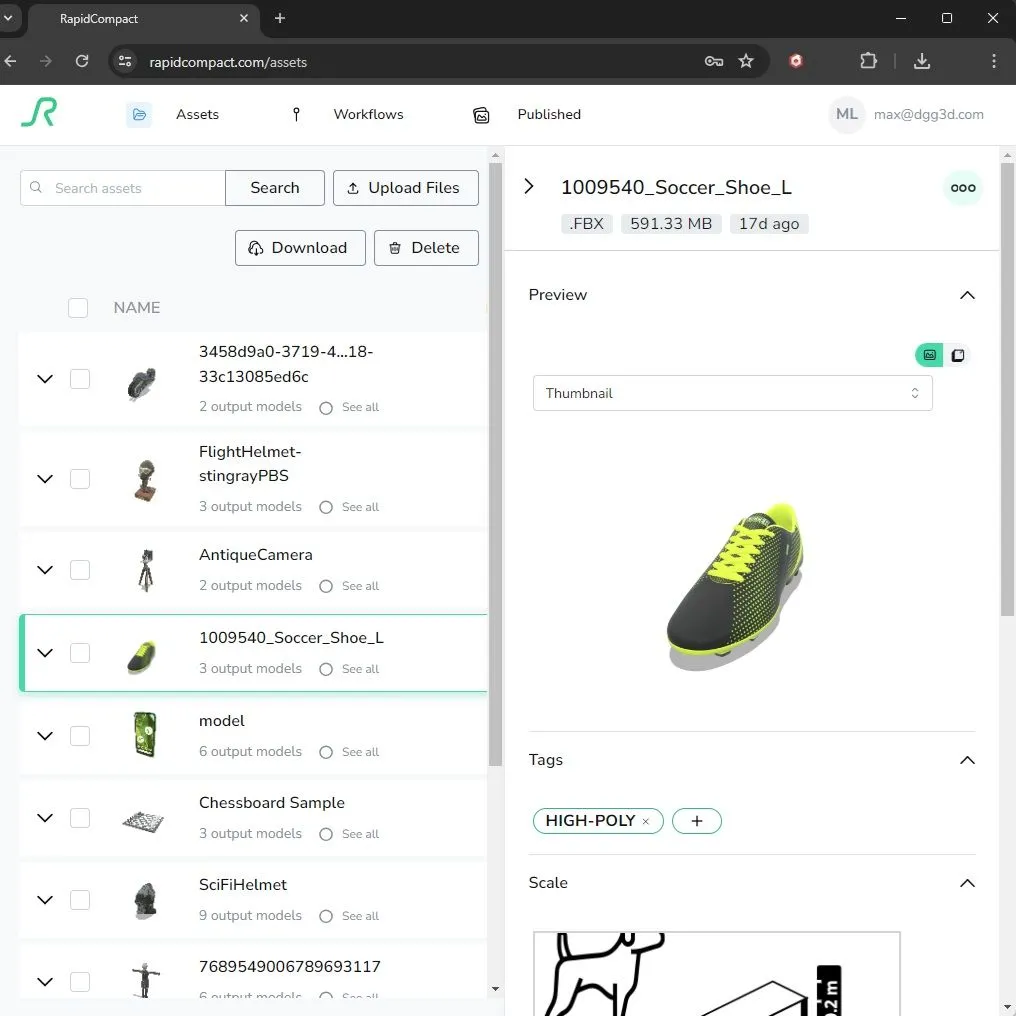
Mesh simplification: 3 ways to automatically optimize 3D geometry
Table of Contents
Why should I use mesh simplification and which methods exist?
Mesh simplification can help your content to get rendered fluently on various devices, but it can also reduce time needed for transmission, and reduce storage size needed.
The following methods can be used:
- Manual modeling: Obtain a low-poly mesh by creating it manually in a modeling tool (DCC software), modeling “over” the original high-resolution asset.
- Using modifiers in DCCs (semi-automated approach): Use a DCC tool, such as 3dsMax or Blender, to load your 3D model and apply a modifier which will simplify it. You must then export the resulting model again from the DCC tool.
- Automated solution (RapidPipeline): Submit your asset and your desired target polygon count to the automated solution and let the software handle the entire simplification process for you and you can simply download the result. This already saves time for a single asset, but it is especially powerful if you have a whole batch of assets that need to be simplified. Ultimately, this can be done via a dedicated REST API, if needed, to integrate seamlessly into your workflow or own tool or platform.
Definitions:
- Mesh Decimation: A form of mesh simplification. An existing mesh is gradually reduced by modifying the original mesh. This careful approach can potentially preserve original attributes very well, such as UV coordinates, which can come in handy for use cases like LODs or when tiled textures or texture mapping in general should remain as-is in the output.
- Remeshing: When applied in the domain of mesh simplification, this term denotes a technique that defines a completely new mesh around the high-resolution one (just like an artist would also do it by hand). Remeshing can automatically replace too detailed mesh parts by larger and more simple parts, which can be very useful. However, it is not preserve original mesh attributes this way, so attributes like UVs, but also texture content must be re-created for the remeshed result. In particular, texture information can be transferred using Texture Baking (link to texture baking article).
- Level-of-Detail (LOD): A technique used at runtime to switch between different, simplified versions of a 3D model (often casually referred to as “LODs”).

How far should a mesh be simplified?
What amount of polygons works well totally depends on your target platform. Here’s a list of acceptable polycounts as specified in the Khronos Asset Creation Guidelines:
| Publishing Target | Recommended Polygon Count |
| Single-Item Mobile AR or 3D Web Catalogue View | 150,000 |
| Banner Ad View | 30,000 |
| Web-based Planning Tool (recommendations for one out of multiple items) | 40,000 |
| Single-Item Desktop 3D Web View | 250,000 |
| Offline Rendering | No Limit |
It is worth noting that different app platforms have individual requirements – in case you would like to use an out-of-the-box solution to fulfill those for your 3D models, look at the RapidPipeline factory presets, which offer pre-configured settings that optimally serve the most popular platforms.
Here's a simple interactive example of how it can look like if you simplify a 3D model to 10% of the original faces (in this case, 70K instead of 700K polygons):
3 Ways, and the easiest way, to simplify geometry
There are three basic approaches for simplifying a 3D mesh:
You can try to use a DCC tool (like Blender or 3dStudioMax). These tools have some simplification functionality integrated, but they are usually not optimally built for this purpose. In addition, such tools require a lot of graphical interaction with the model to tweak the results and to get the job done, which is especially not feasible if you have to optimize a lot of 3D models well, within a short time.
You can try to use specialized free tools like MeshLab. These will give you some options, but are still limited when it comes to format support and other aspects, and they are usually not optimized for UX or industry-scale processing.
You can use RapidPipeline, a tool that is specialized for exactly this job. This approach yields the best quality, while at the same time being the most scalable one, and - on top of that - the easiest to use.
To use RapidPipeline, simply follow these easy steps:
- Sign up for free
- Upload one or more of your 3D models that you'd like to simplify
- Select the model(s) you'd like to simplify and press "Run 3D Processor"
- Select the preset you'd like to use for the simplification, or define your own preset
- Once the model(s) have been simplified, download the results
That's it!
Hopefully this article was helpful, and let us know if we can help you with the next steps on your 3D pipeline journey!

Meet the Author

Max
CEO & Co-Founder
Max is a Co-Founder and the CEO at DGG. Working with leading retailers, Max and his team are on a mission to automate 3D asset optimization workflows for real-time applications - for e-commerce, games and beyond. Max received his PhD of engineering with honors from TU Darmstadt, in the area of 3D data optimization. He has also helped to shape the glTF format at Khronos.